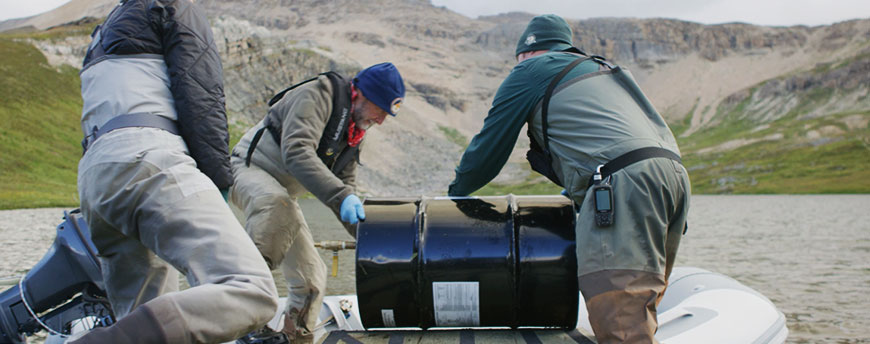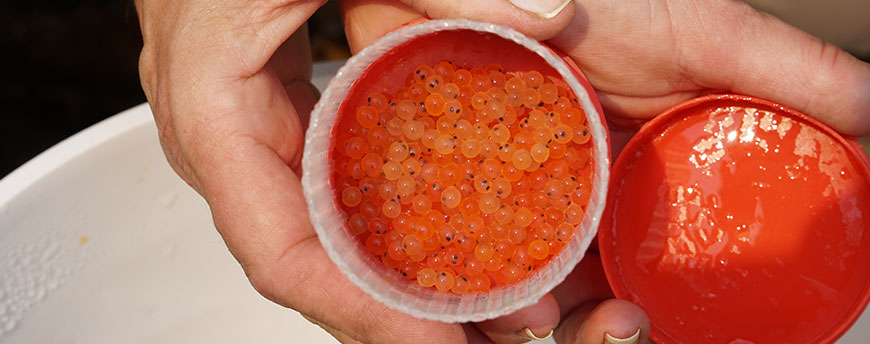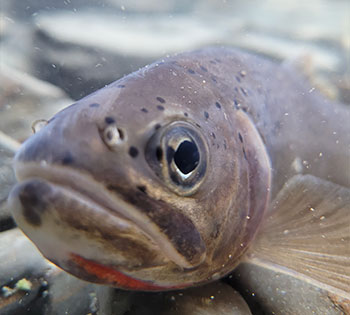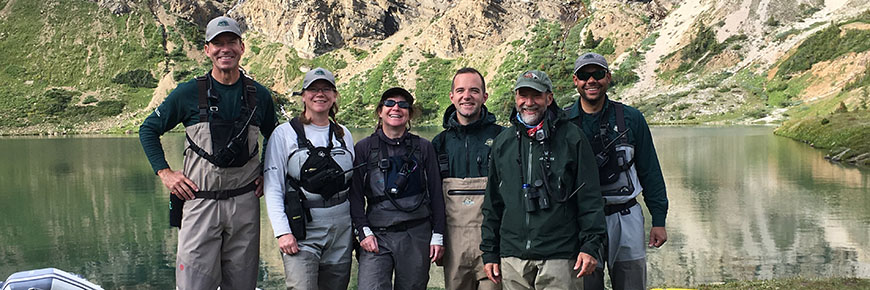
Hidden Lake
Banff National Park
Parks Canada is restoring critical habitat for westslope cutthroat trout in Banff National Park. These fish once lived in abundance in the cold, fresh waters of Hidden Lake. Now, the Alberta population is listed as threatened under the Species at Risk Act.
In the early 1900s Parks Canada began stocking mountain park lakes to satisfy the growing number of visitors wanting to fish. Non-native fish, including brook and rainbow trout, were introduced and flourished, displacing native species. Parks Canada no longer stocks lakes with non-native fish, but these past stocking practices continue to impact the park’s aquatic ecosystems.
Westslope cutthroat trout are a species at risk for several reasons:- Displacement by non-native fish
- Competition with brook trout for resources
- Hybridization with rainbow and Yellowstone cutthroat trout
- Loss and damage to stream habitat
- Increasing water temperature and other factors related to climate change
Parks Canada‘s four step process to save threatened trout:
1. Identify secure habitat
The ideal restoration area for westslope cutthroat trout has cold, clean water with suitable spawning grounds and a barrier downstream to stop non-native fish from swimming upstream into the restored habitat. Hidden Lake, in the Skoki area, meets these criteria and once had a thriving population of westslope cutthroat trout.
2. Remove non-native fish
Before introducing westslope cutthroat trout, aquatic staff needed to remove non-native brook trout from the lake.
2011 – 2017
Aquatic staff worked hard to rid Hidden Lake of non-native brook trout through angling, gill netting and electro fishing. None of these manual removal techniques were effective.
2018 – 2019
With the help of partners, the aquatics staff treated Hidden Lake with rotenone twice. Treatment took place over one day each year. Staff stayed on site for about a week to ensure rotenone levels had safely decreased. They applied a neutralizing agent that works alongside rushing water and sunlight to breakdown rotenone.

2020
Aquatics staff monitored Hidden Lake using environmental DNA
Living organisms constantly shed genetic material in the form of DNA. The material, called environmental DNA or eDNA, lingers. It can be collected with water samples rather than directly from the organism. eDNA sampling along with physical monitoring (angling, netting, electro fishing) can help tell us if non-native species are present.
Monitoring showed that all non-native fish were removed and healthy insect and zooplankton populations – food for fish – remained. The reintroduction of westslope cutthroat trout could begin!
3. Reintroduce westslope cutthroat trout

2021
In June, the aquatics staff collected eggs and milt from a genetically pure population of westslope cutthroat trout in Big Fish Lake, Banff National Park. The eggs and milt were combined by staff streamside to complete fertilization. They were then sent to a hatchery to start their growth in optimal conditions. The partially mature eggs were placed in containers in Hidden Creek so that they could hatch and grow safely into fry, aka baby fish. This is called remote stream-side incubation. After roughly three weeks in the streamside incubators, 311 fry were released directly into their new forever home – Hidden Lake’s outlet stream, Hidden Creek. They are the first westslope cutthroat trout to swim in Hidden Creek in 50 years!
2023
Following the first year of reintroduction, Parks Canada developed a personalized incubator to lower costs and minimize egg transport and handling time to an external hatchery. Between 2022 and 2023, over ten thousand eggs were raised within the park and released into Hidden Lake and tributaries using the incubator.

Remote streamside incubation helps ensure survival of fertilized eggs for several reasons:
- Allows newly hatched fish to adapt to their natural environment at the start of their lives
- Prevents the fry from becoming habituated to the hatchery environment
- Protects them from the dangers of transport
An incubator for the mountain parks
The aquatics team will launch the use of an incubation trailer in spring 2022, negating the use of a hatchery and allowing all processes to be completed on site. Look for the incubation trailer in Banff and Yoho national parks during your visit!
4. Monitor success
Moving forward
The team will monitor the reintroduced fish and continue remote streamside incubation until Hidden Lake supports a healthy self-sustaining population of westslope cutthroat trout.
Why all the fuss about fish?

Protecting species at risk and restoring aquatic ecosystems are priorities for Parks Canada.
- Westslope cutthroat trout are a fussy fish or what we call an indicator species. They thrive in cold, clean and unpolluted waters. A healthy population helps to indicate a healthy ecosystem.
- Healthy aquatic ecosystems are integral to the health of the whole ecosystem.

Stay on this journey with Parks Canada as we protect and restore habitat for species at risk.
For more information, contact pc.llykaquatics-aquatiquesllyk.pc@pc.gc.ca
- Date modified :